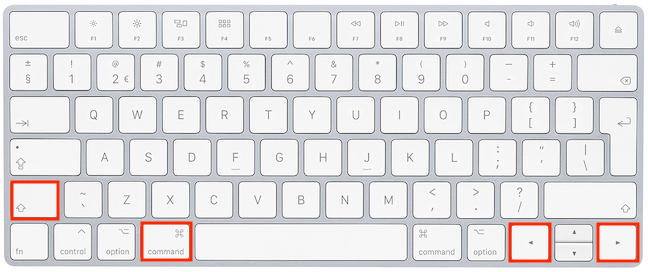
- HOW TO PRESS END KEY ON MAC HOW TO
- HOW TO PRESS END KEY ON MAC FREE
- HOW TO PRESS END KEY ON MAC MAC
- HOW TO PRESS END KEY ON MAC WINDOWS
But still, if you face any kind of trouble while executing the above steps, feel free to share that through the comment box. All the steps we have provided in the above post are quite simple to apply. These are the probable steps to generate the SSH pair in macOS. Once you confirm the passphrase, it will generate the key pair and you will see the output.

Or if you prefer, you can also press the Enter key from the keyboard to accept the default one. If you want to change the location, type the name of the file and hit the Enter key from the keyboard to apply that.Īfterward, the ssh-keygen tool will ask you for the passphrase. Hit the Enter key from the keyboard to accept the default location (/home/username/.ssh/). Note: Once you run this command, the ssh-keygen tool will ask you to select the location where you want to store the key. It will start the SSH key generation process.
HOW TO PRESS END KEY ON MAC HOW TO
How to Create an SSH Key Pair in macOS?įirst and foremost, open the terminal and run the command “$ ssh-keygen -t rsa” under the username. Now, it is time to generate an SSH key pair in your macOS. Once you run the above commands, you have successfully created a back up of your old SSH keys. To do this, first, navigate to the Terminal window and run the following commands: How to Create a Back up of the Old SSH Keys?

If you see there are existing keys, but if you don’t want to use them, then you can create a back up of the old SSH keys.
HOW TO PRESS END KEY ON MAC WINDOWS
To get the same result as the Windows platform (that is, going to the end of the current line of text), press Command+. Pressing F4 gives you quick access to business, communication and Internet tools. On Apple keyboards that do not have an End key, one can press Fn+ for the End key functionality described above. Also, like Windows, the End key can be used to highlight all the characters after the cursor in a certain line if pressed along with ⇧ Shift in editable text. Pressing F3 lets you switch to Expose view to see all running programs or apps. It positions the cursor at the end of a line in editable text, and otherwise scrolls a scrollable document to the end. In Linux, the End key has basically the same functionality as it does on Windows. An application can be used to change this behaviour. Learn the easiest ways to detect and quit sluggish apps and hidden processes.
HOW TO PRESS END KEY ON MAC MAC
To get the same result as the Windows platform (that is, going to the end of the current line of text), press ⌘ Command+ →. If your Mac seems to be working slowly than usual, you can check and terminate tasks with these simple steps. On Apple keyboards that do not have an End key, one can press Fn+ → for the End key functionality described above. A visual of your keyboard will appear on your screen. When the key is pressed, the window scrolls to the bottom, while the cursor position does not change at all that is, the End key is tied to the window, not the text box being edited. Click on the Input Menu icon (which will now be on the right side of your menu bar). In most macOS applications, the key works differently than on other platforms.
The End key can also be used to highlight all the characters after the cursor in a certain line if pressed along with ⇧ Shift in editable text. When the text is not editable, it is used to scroll to the end of the document this can also be done in editable text if the key is pressed along with Control. In modern Microsoft Windows text editing applications, the End key is primarily used to move the cursor to the end of the line in which it is positioned.


 0 kommentar(er)
0 kommentar(er)
